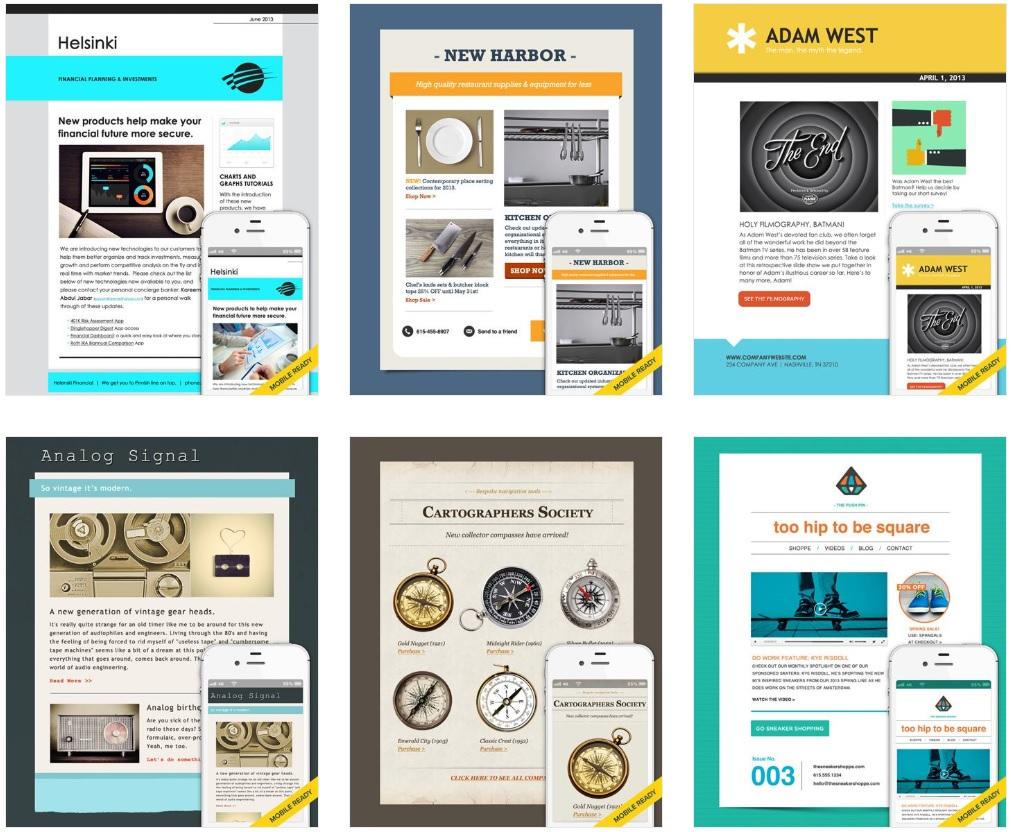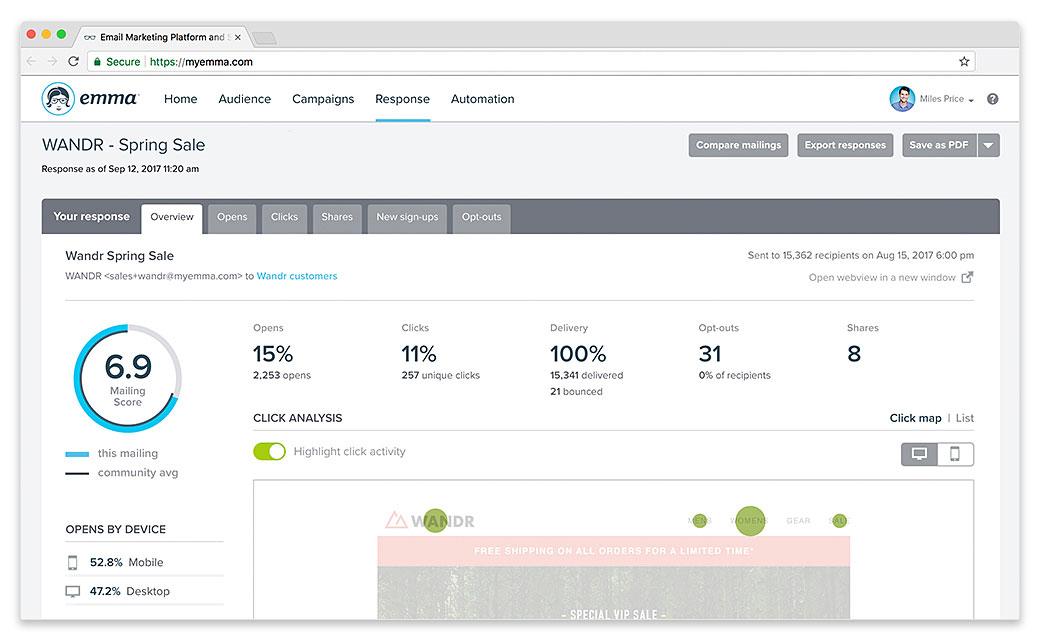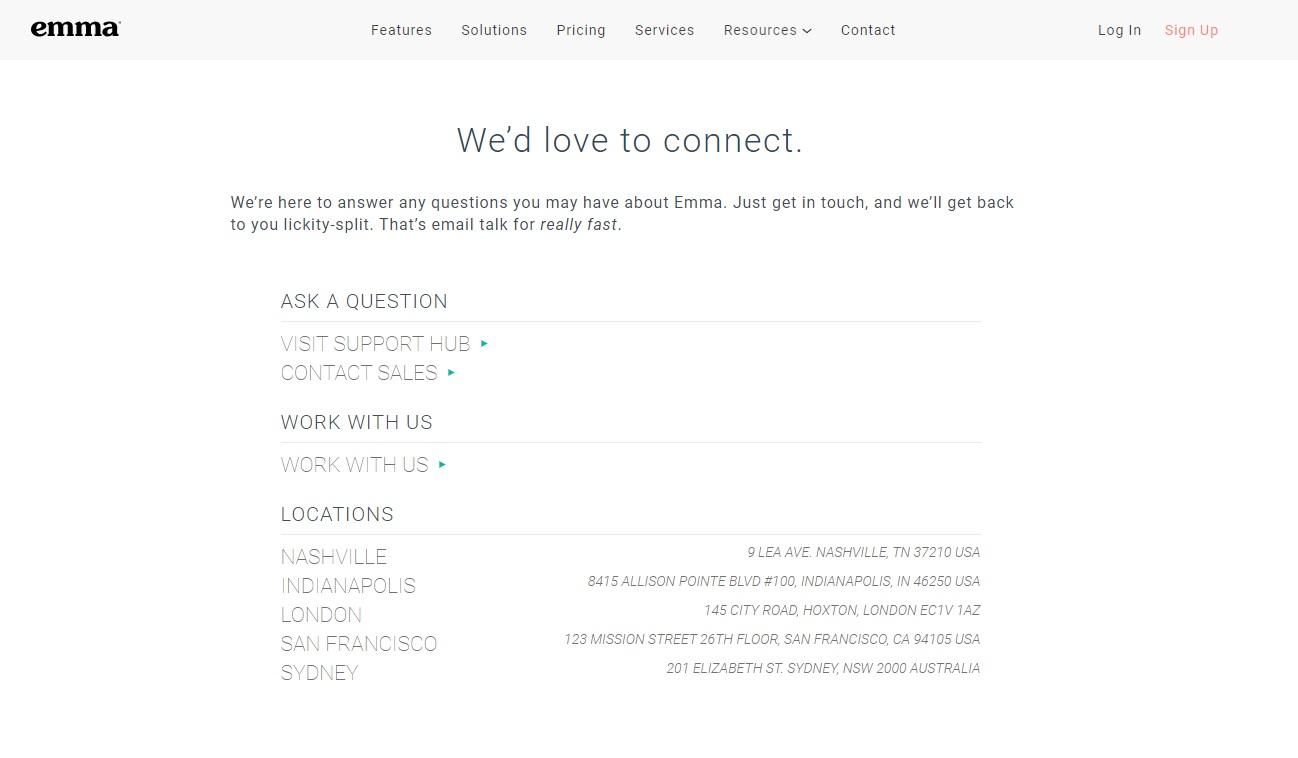Everything you need to know about email service providers

Marketing in our digital world can seem intimidating if you aren’t familiar with all that technology offers.
The same can be said for email marketing—especially if you don’t know the ins-and-outs of a successful campaign.
One area where most small business marketers have trouble navigating is in choosing an email service provider (ESP)—one that allows you to send and receive emails and provides you with features to create and evaluate your campaigns.
What is an ESP?
For those that need a little clarification: An ESP is more than a platform for sending and receiving emails. Gmail, AOL Mail, and Yahoo! Mail are all examples of ESPs that provide the most basic services, often for free. That means users can send and receive email messages for little to no cost.
While that may be an attractive method for those just starting to build their brands, free ESPs aren’t necessarily the best route when it comes to getting your email campaigns created and sent out.
Why? Because most free ESPs have limitations. They allow you to send so many messages, or don’t provide the ability to monitor your messages after hitting send.
While spending money on paid ESPs may seem a bit intimidating, it’s often worth the investment. These services enable you to not only send out campaigns but often include features that allow you to monitor your campaign’s success, maintain your email list, and automate to help simplify day-to-day workflows.
Source: Emma
ESP terminology you should know
As a lead marketer, you and your team should be more than familiar with many email marketing terms. However, some need to be clarified, especially when choosing an ESP that not only you, but your entire brand, can work with.
Here are a few terms that you’ll want to be familiar with when browsing for an ESP:
-
Autoresponder – A type of automated email. These are typically a single message triggered by a particular user action.
-
Bounce – An email that couldn't be delivered. Bounces are often categorized into either soft or hard bounces. Hard bounces are the result of an invalid address, while soft bounces are typically the result of temporary delivery issues, such as a full recipient inbox.
-
Bulk mail/mass email – A message sent to a large group at once. Many of these emails come in the form of general advertisements and offer little to no personalization.
-
CAN-SPAM – A law that sets all the rules for commercial email marketing campaigns. These rules give consumers the right to have a business remove them from their mailing list. If the brand doesn’t comply promptly, they can face some tough penalties.
-
Canadian Anti-Spam Law (CASL) – A Canadian law that protects the rights of citizens by reducing the harmful effects of spam and other related threats to electronic commerce. Those who don’t comply with the rules and regulations set forth by CASL can and will face penalties.
-
Email client – A desktop application that allows users to read, write, and send email messages.
-
Email queue – A list of email messages waiting to be processed for delivery.
-
Image blocking – A feature offered by most email clients and often part of the default settings. This means incoming emails have images blocked to help decrease load times.
-
Domain blocklist – A list of IP addresses, domains, or specific email addresses that have been flagged as spam for several reasons, including being marketed as containing potentially harmful content. Many ESPs block these to protect their users from harmful content.
-
General Data Protection Regulation (GDPR) – This law provides European citizens greater control over the collection and use of their personal data. Not following the rules and regulations set forth by the GDPR can and will result in severe penalties.
-
Honey pot – An email address planted by organizations that acts as a spam trap. If this address receives a message from spammers, it’s automatically flagged to protect the organization.
-
IP warmup – The process of slowly increasing the number of email messages sent from a new IP address. This allows you to avoid catching the eye of spam filters and makes sure your messages are received by your subscribers.
-
Sender score – A number between zero and 100 that identifies a sender’s reputation. This score plays a significant role in how email clients view your brand’s IP address and determines whether your emails will be flagged as spam or not.
-
Shared IP – An IP address that’s used for multiple sites.
-
Spam filters – Filters set forth to help identify potentially harmful email content.
-
Sender Policy Framework (SPF) – An email authentication record that helps detect forged email addresses. Many ESPs allow brands to set their SPF record for their domain host to ensure your subscribers know where your emails come from and how to spot email spoofs.
Choosing the right ESP for your brand
When it comes time to choose the right ESP for your brand, there are several different factors you should be considering.
1. Features/templates
Knowing which features you’re looking for is vital to the decision-making process. Many of the best ESPs provide clients with dozens of outstanding features to help maximize your investment.
However, not all brands will benefit from the same features at the same price points. Do your research and investigate features (like templates, the ability to set triggers for personalized automation, the ability to segment your email list, and testing your campaigns).
Source: Emma
2. Ease of use
Your day is complicated enough. You don’t want an ESP that only adds to the confusion. Like we mentioned above: Look into the features that each ESP provides and pick out the one that allows you to make the most of your investment. The point here isn’t to pick the ESP with all the bells and whistles (especially if you aren’t ready to handle it all). Instead, pick the one with the most essential options—let it help you get through your day with little to no complication.
3. Automation
One of the biggest draws to any ESP is email automation. Nobody has time to respond to every email. Email automation allows you to set up campaigns in advance—so once a subscriber hits a predefined trigger, an email is automatically sent out.
4. Tracking
Another important feature to look for when choosing an ESP is the ability to track the success of your campaigns. After all, what good is a well-crafted message if you can’t measure its success?
The only way to know what’s working and what isn’t is by tracking key performance indicators (KPIs). Make sure your chosen ESP has some sort of dashboard where you can quickly and easily monitor all your email marketing activities.
Source: Emma
5. Security
Data breaches are unfortunately a common occurrence. This makes digital marketing challenging to navigate because consumers are worried that their personal information could be at risk.
When looking at different ESPs, make sure you find out what they provide as far as security goes (not only for yourself but your subscribers as well).
6. Support
Finally, make sure you choose an ESP that gives you the support you need should there be an issue. The ESP should have:
-
Plenty of ways to contact them
-
Online reviews so you can see what other users have run into
-
A proven track record in customer support
Source: Emma
Wrap up
Taking time to choose the right ESP for your needs doesn’t have to be an overwhelming process. This is especially true if you keep the following factors in mind during your research process:
-
Features/templates
-
Ease of use
-
Automation
-
Tracking
-
Security
-
Support
MOST RECENT ARTICLES
Want to engage your audience and grow your brand? Try Emma's robust easy-to-use product today.
















